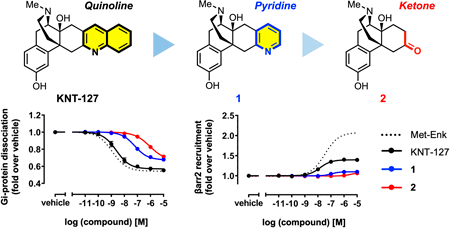- J-STAGE home
- /
- Chemical and Pharmaceutical Bu ...
- /
- Volume 73 (2025) Issue 3
- /
- Article overview
-
Keita Kajino
Graduate School of Science and Technology, University of Tsukuba, 1–1–1 Tennodai, Tsukuba, Ibaraki 305–8571, Japan International Institute for Integrative Sleep Medicine (WPI-IIIS), University of Tsukuba, 1–1–1 Tennodai, Tsukuba, Ibaraki 305–8575, Japan
-
Tomoya Sugai
Graduate School of Science and Technology, University of Tsukuba, 1–1–1 Tennodai, Tsukuba, Ibaraki 305–8571, Japan International Institute for Integrative Sleep Medicine (WPI-IIIS), University of Tsukuba, 1–1–1 Tennodai, Tsukuba, Ibaraki 305–8575, Japan
-
Ryoji Kise
Graduate School of Pharmaceutical Sciences, Tohoku University, 6–3 Aoba, Aramaki, Aoba-ku, Sendai 980–8578, Japan
-
Riko Suzuki
Graduate School of Pharmaceutical Sciences, Tohoku University, 6–3 Aoba, Aramaki, Aoba-ku, Sendai 980–8578, Japan
-
Akihisa Tokuda
International Institute for Integrative Sleep Medicine (WPI-IIIS), University of Tsukuba, 1–1–1 Tennodai, Tsukuba, Ibaraki 305–8575, Japan Graduate School of Comprehensive Human Sciences, University of Tsukuba, 1–1–1 Tennodai, Tsukuba, Ibaraki 305–8575, Japan
-
Yuki Sekiya
Graduate School of Science and Technology, University of Tsukuba, 1–1–1 Tennodai, Tsukuba, Ibaraki 305–8571, Japan International Institute for Integrative Sleep Medicine (WPI-IIIS), University of Tsukuba, 1–1–1 Tennodai, Tsukuba, Ibaraki 305–8575, Japan
-
Tomoya Kakumoto
Graduate School of Science and Technology, University of Tsukuba, 1–1–1 Tennodai, Tsukuba, Ibaraki 305–8571, Japan International Institute for Integrative Sleep Medicine (WPI-IIIS), University of Tsukuba, 1–1–1 Tennodai, Tsukuba, Ibaraki 305–8575, Japan
-
Risako Katamoto
International Institute for Integrative Sleep Medicine (WPI-IIIS), University of Tsukuba, 1–1–1 Tennodai, Tsukuba, Ibaraki 305–8575, Japan Graduate School of Comprehensive Human Sciences, University of Tsukuba, 1–1–1 Tennodai, Tsukuba, Ibaraki 305–8575, Japan
-
Noriki Kutsumura
Graduate School of Science and Technology, University of Tsukuba, 1–1–1 Tennodai, Tsukuba, Ibaraki 305–8571, Japan International Institute for Integrative Sleep Medicine (WPI-IIIS), University of Tsukuba, 1–1–1 Tennodai, Tsukuba, Ibaraki 305–8575, Japan Graduate School of Comprehensive Human Sciences, University of Tsukuba, 1–1–1 Tennodai, Tsukuba, Ibaraki 305–8575, Japan
-
Yasuyuki Nagumo
International Institute for Integrative Sleep Medicine (WPI-IIIS), University of Tsukuba, 1–1–1 Tennodai, Tsukuba, Ibaraki 305–8575, Japan
-
Asuka Inoue
Graduate School of Pharmaceutical Sciences, Tohoku University, 6–3 Aoba, Aramaki, Aoba-ku, Sendai 980–8578, Japan Graduate School of Pharmaceutical Sciences, Kyoto University, 46–29 Yoshida-Shimo-Adachi-cho, Sakyo-ku, Kyoto 606–8501, Japan
-
Tsuyoshi Saitoh
Corresponding author
Graduate School of Science and Technology, University of Tsukuba, 1–1–1 Tennodai, Tsukuba, Ibaraki 305–8571, Japan International Institute for Integrative Sleep Medicine (WPI-IIIS), University of Tsukuba, 1–1–1 Tennodai, Tsukuba, Ibaraki 305–8575, Japan Graduate School of Comprehensive Human Sciences, University of Tsukuba, 1–1–1 Tennodai, Tsukuba, Ibaraki 305–8575, Japan Division of Biomedical Science, Institute of Medicine, University of Tsukuba, 1–1–1 Tennodai, Tsukuba, Ibaraki 305–8575, Japan
Supplementary material
2025 Volume 73 Issue 3 Pages 246-256
- Published: March 29, 2025 Received: January 07, 2025 Released on J-STAGE: March 29, 2025 Accepted: January 19, 2025 Advance online publication: - Revised: -
(compatible with EndNote, Reference Manager, ProCite, RefWorks)
(compatible with BibDesk, LaTeX)


